Biology > EXAM > BIOL 100B Test Bank For Cell And Molecular Biology Concepts And Experiments 7th Edition Test Bank � (All)
BIOL 100B Test Bank For Cell And Molecular Biology Concepts And Experiments 7th Edition Test Bank – Gerald Karp
Document Content and Description Below
BIOL 100B Test Bank For Cell And Molecular Biology Concepts And Experiments 7th Edition Test Bank – Gerald Karp Package Title: Test Bank Course Title: Karp7e Chapter Number: 5 Question Type: M... ultiple Choice 1) Which of the following is not found in a reducing atmosphere? 4. d) H2O 5. e) Both O2 and H2O 2) What advantage do the cristae confer on the mitochondria? 1. a) They allow the mitochondria to shrink. 2. b) They greatly increase the surface area for aerobic respiration machinery. 3. c) They confer resiliency on the cells. 4. d) They allow swelling of mitochondria. 5. e) They activate the matrix. 3) The balance between fusion and fission is likely a major determinant of . 1. a) number 2. b) length 3. c) color 4. d) degree of interconnection 5. e) number, length and degree of interconnection 4) When fusion of mitochondria becomes more frequent than fission, the mitochondria tend to become . 1. a) more elongated 2. b) more interconnected 3. c) more numerous 4. d) more distinct 5. e) more elongated and more interconnected 5) When fission of mitochondria becomes more frequent than fusion, the mitochondria tend to become . 1. a) more elongated 2. b) more interconnected 3. c) more numerous 4. d) more distinct 5. e) more numerous and more distinct Difficulty: Medium Learning Objective: LO 5.1 Compare the properties and evolutionary history of the inner and outer mitochondrial membranes and the intermembrane space and the matrix. Section Reference: Section 5.1 Mitochondrial Structure and Function 6) The presence of Ca2+ ion transport molecules in the inner mitochondrial membrane is consistent with the mitochondrion’s role in . 4. d) ADP manufacture 5. e) control of membrane fusion 7) Mitochondria are sites of the . 1. a) synthesis of certain amino acids 2. b) synthesis of heme groups 3. c) uptake of Ca2+ ions 4. d) release of Ca2+ ions 5. e) All of these are correct. Section Reference: Section 5.1 Mitochondrial Structure and Function 8) Which of the following is(are) regulated by mitochondria? 1) intracellular levels of Ca2+ ions 2) intracellular levels of K+ ions 3) process of cell death 4) process of closure 1. a) 1 2. b) 2 3. c) 3 4. d) 4 5. e) 1 and 3 9) Which of the following regulate intracellular levels of Ca2+ ions? 1. a) Golgi apparatus 2. b) ribosomes 3. c) endoplasmic reticulum 4. d) mitochondria 5. e) both endoplasmic reticulum and mitochondria 10) What are the two interconnected domains of the inner mitochondrial membrane? 1. a) inner boundary membrane, cristae 2. b) central boundary membrane, cristae 3. c) cristae boundary membrane, outer boundary membrane 4. d) inner boundary membrane, outer boundary membrane 5. e) cristae, matrix 11) What is defined as a domain of the inner mitochondrial membrane that is present within the interior of the mitochondrion as a series of invaginated membranous sheets? 1. a) inner boundary membrane 2. b) outer boundary membrane 3. c) cristae 4. d) matrix 5. e) pseudopodia 12) The inner boundary membrane is particularly rich in which of the following? 1. a) protons 2. b) proteins responsible for the import of mitochondrial proteins 3. c) Krebs cycle enzymes 4. d) enzymes of the glycolytic pathway 5. e) glycosaminoglycans Difficulty: Medium Learning Objective: LO 5.1 Compare the properties and evolutionary history of the inner and outer mitochondrial membranes and the intermembrane space and the matrix. Section Reference: Section 5.1 Mitochondrial Structure and Function 13) Which lipid is known for playing an important role in facilitating the activity of proteins involved in ATP synthesis? 1. a) diphosphatidylglycerol 2. b) phosphatidyl inositol 3. c) phosphatidic acid 4. d) cardiolipin 5. e) both diphosphatidylglycerol and cardiolipin 14) What evidence suggests that the inner mitochondrial membrane has evolved from a bacterial plasma membrane? 1) the presence of porins in both membranes 2) the virtual absence of cholesterol from both membranes 3) both membranes being rich in cardiolipin 4) both membranes being rich in diphosphatidylglycerol 1. a) 1 2. b) 2 3. c) 3 4. d) 4 5. e) 2, 3 and 4 15) What evidence suggests that the outer mitochondrial membrane has evolved from the outer membrane that is present as part of the cell wall of certain bacteria? 1) the presence of porins in both membranes 2) the virtual absence of cholesterol from both membranes 3) both membranes being rich in cardiolipin 4 both membranes being rich in diphosphatidylglycerol 1. a) 1 2. b) 2 3. c) 3 4. d) 4 5. e) 1 and 4 16) From what does the mitochondrial RNA polymerase appear to have evolved? 1) the multisubunit RNA polymerase found in prokaryotic cells 2) the multisubunit RNA polymerase found in eukaryotic cells 3) the multisubunit RNA polymerase found in bacterial viruses (bacteriophage) 4) the single subunit RNA polymerase found in bacterial viruses (bacteriophage) 1. a) 1 2. b) 2 3. c) 3 4. d) 4 5. e) 1 and 2 Learning Objective: LO 5.1 Compare the properties and evolutionary history of the inner and outer mitochondrial membranes and the intermembrane space and the matrix. Section Reference: Section 5.1 Mitochondrial Structure and Function 17) In what ways can pyruvate and NADH be metabolized? 1. a) fermentation, hydrolysis of PGAL 2. b) condensation of PGAL and fermentation 3. c) aerobic processes using Krebs cycle, fermentation 4. d) anaerobic processing using Krebs cycle, fermentation 5. e) aerobic processing using Krebs cycle, hydrolysis of PGAL 18) How many carbons from 13 original glucose molecules enter the Krebs cycle in the presence of oxygen? 1. a) 0 2. b) 13 3. c) 26 4. d) 52 5. e) 78 19) How many carbons from 13 original glucose molecules enter the Krebs cycle in the absence of oxygen? 1. a) 0 2. b) 13 3. c) 26 4. d) 52 5. e) 78 20) What happens to the carbons of pyruvate that do not enter the Krebs cycle? 1. a) They are converted to carbohydrates. 2. b) They are converted to CO2. 3. c) They are converted to glucose. 4. d) They are converted to ATP. 5. e) They are converted to carbon monoxide (CO). 21) What molecule is responsible for conveying 2 carbons from pyruvate to the Krebs cycle? 1. a) Coenzyme G 2. b) Coenzyme A 3. c) Acetate 4. d) pyruvate 5. e) oxaloacetate 22) Which component involved in the Krebs (TCA) cycle is bound to the inner mitochondrial membrane? 1. a) oxaloacetate 2. b) acetyl CoA 3. c) succinate dehydrogenase 4. d) succinate 5. e) succinyl CoA 23) Where are most of the enzymes of the Krebs cycle located? 1. a) in the intercristal space 2. b) on the cristae 3. c) on the ribosomes 4. d) in the soluble phase of the mitochondrial matrix 5. e) in the intermembrane space 24) To what is the 2-carbon fragment of acetyl CoA added to make citric acid at the start of the Krebs cycle? 1. a) oxaloacetate 2. b) citric acid 3. c) succinate 4. d) ◻-ketoglutarate 5. e) isocitric acid 25) What is the terminal electron acceptor of the electron transport chain? 1. a) water 2. b) O2 26) How is the energy used to make ATP via the electron transport chain generated? 1. a) The energy from electrons bound to reduced coenzymes is used to create a steep electrochemical gradient. 2. b) Electrons bound to NADH are used to generate a H+ ion gradient across the inner mitochondrial membrane. 3. c) Electrons bound to FADH2 are used to generate a proton gradient across the inner mitochondrial membrane. 4. d) Electrons bound to NADH are used to generate a proton gradient across the inner mitochondrial membrane. 5. e) All of these are correct. 27) What is the name of the process by which the electron transport chain generates the electrochemical gradient that drives ATP production in the mitochondrion? 1. a) osmosis 2. b) diffusion 3. c) facilitated diffusion 4. d) chemiosmosis 5. e) frusion 28) On average, how many ATPs would be made if 4 NADH and 6 FADH2 molecules donated their high-energy electrons to the mitochondrial electron transport chain? 1. a) 10 2. b) 24 3. c) 12 4. d) 30 5. e) 20 29) How do mitochondria generate and store the energy used to produce most of the ATP made during aerobic respiration? 1. a) by producing heat 2. b) by generating a heat gradient 3. c) by generating an ionic (electrochemical) gradient 4. d) by generating a Cl– ion gradient 5. e) by generating a Na+ ion gradient 30) exhibit lower electron affinity. 4. d) Weak reducing agents 5. e) Weak eliminating agents 31) Spontaneous oxidation-reduction (redox) reactions are accompanied by . 1. a) a gain of heat energy 2. b) a loss of free energy 3. c) a gain of free energy 4. d) a loss of heat energy 5. e) a gain of heat loss 32) The direct formation of ATP by the transfer of a phosphate group from a donor molecule to ADP is called . 1. a) substrate-level phosphorylation 2. b) oxidative phosphorylation 3. c) cyclic photophosphorylation 4. d) noncyclic photophosphorylation 5. e) indigenous phosphorylation 33) Which enzyme of the Krebs (TCA) cycle is different from the others with respect to its location and where is it located? 1. a) succinate dehydrogenase, mitochondrial matrix 2. b) malate dehydrogenase, mitochondrial matrix 3. c) succinate dehydrogenase, inner mitochondrial membrane 4. d) malate dehydrogenase, inner mitochondrial membrane 5. e) succinate dehydrogenase, intermembrane space 34) What type of electron carrier has a prosthetic group derived from vitamin B2? 1. a) flavoproteins 2. b) cytochromes 3. c) copper atom containing carriers 4. d) ubiquinone 5. e) iron-sulfur proteins 35) What type of electron carrier has a prosthetic group derived from riboflavin? 1. a) flavoproteins 2. b) cytochromes 36) What is another name from for partially reduced ubiquinone? 1. a) ubiquinone 2. b) ubisemiquinone 3. c) ubiquinol 4. d) ubiquinde 5. e) ubiquinate 1. a) water 2. b) carbon dioxide 3. c) carbon monoxide 4. d) hydrogen 5. e) oxygen 38) What is formed when electrons reach the bottom of the mitochondrial electron transport chain and bind to the final electron acceptor? 1. a) water 2. b) carbon dioxide 3. c) carbon monoxide 4. d) hydrogen 5. e) oxygen 39) How do many potent respiratory poisons exert their effect? 1. a) They break down oxygen. 2. b) They bind to electrons. 3. c) They bind to the cytochrome oxidase catalytic site. 4. d) They bind to oxygen. 5. e) They denature the inner mitochondrial membrane. 40) You are trying to figure out an electron transport pathway including the following electron transport molecules: B, K, T, Q and X. You do so by employing inhibitors for various steps in the process. When you do, you get the following results: Inhibitor Electron Transport Molecules Trapped in Reduced Form Estin T, K, Q & B Lucin Q, K & T What is the order of the molecules (the pathway) in the electron transport chain suggested by the above data from the most reduced to the least reduced molecule? 1. a) K —> T —> B —> Q —> X 2. b) K —> X —> B —> Q —> T 3. c) K —> Q —> T —> B —> X 4. d) X —> B —> T —> Q —> K 5. e) T —> B —> K —> Q —> X [Show More]
Last updated: 1 year ago
Preview 1 out of 40 pages
Instant download

Buy this document to get the full access instantly
Instant Download Access after purchase
Add to cartInstant download
Reviews( 0 )
Document information
Connected school, study & course
About the document
Uploaded On
Jul 28, 2020
Number of pages
40
Written in
Additional information
This document has been written for:
Uploaded
Jul 28, 2020
Downloads
0
Views
81













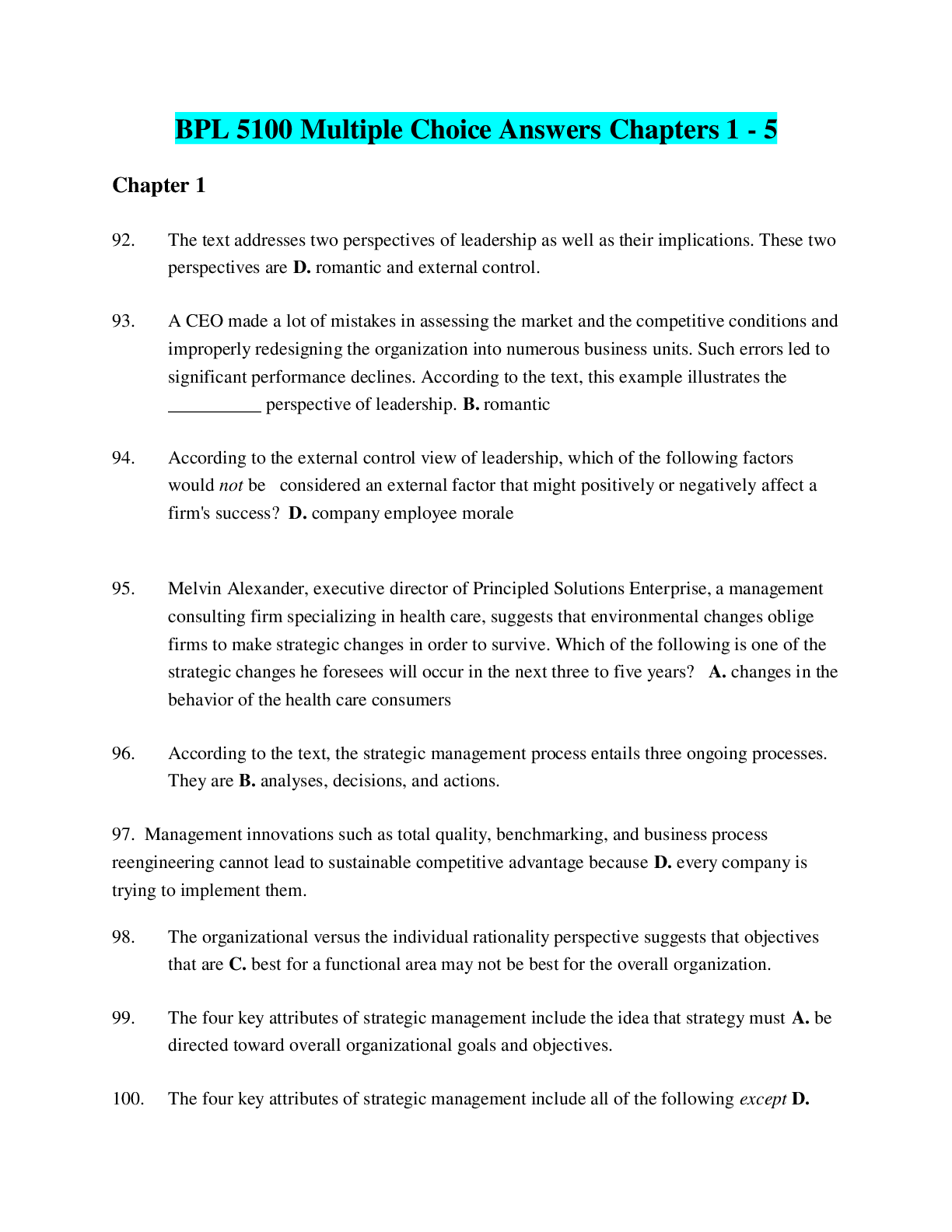
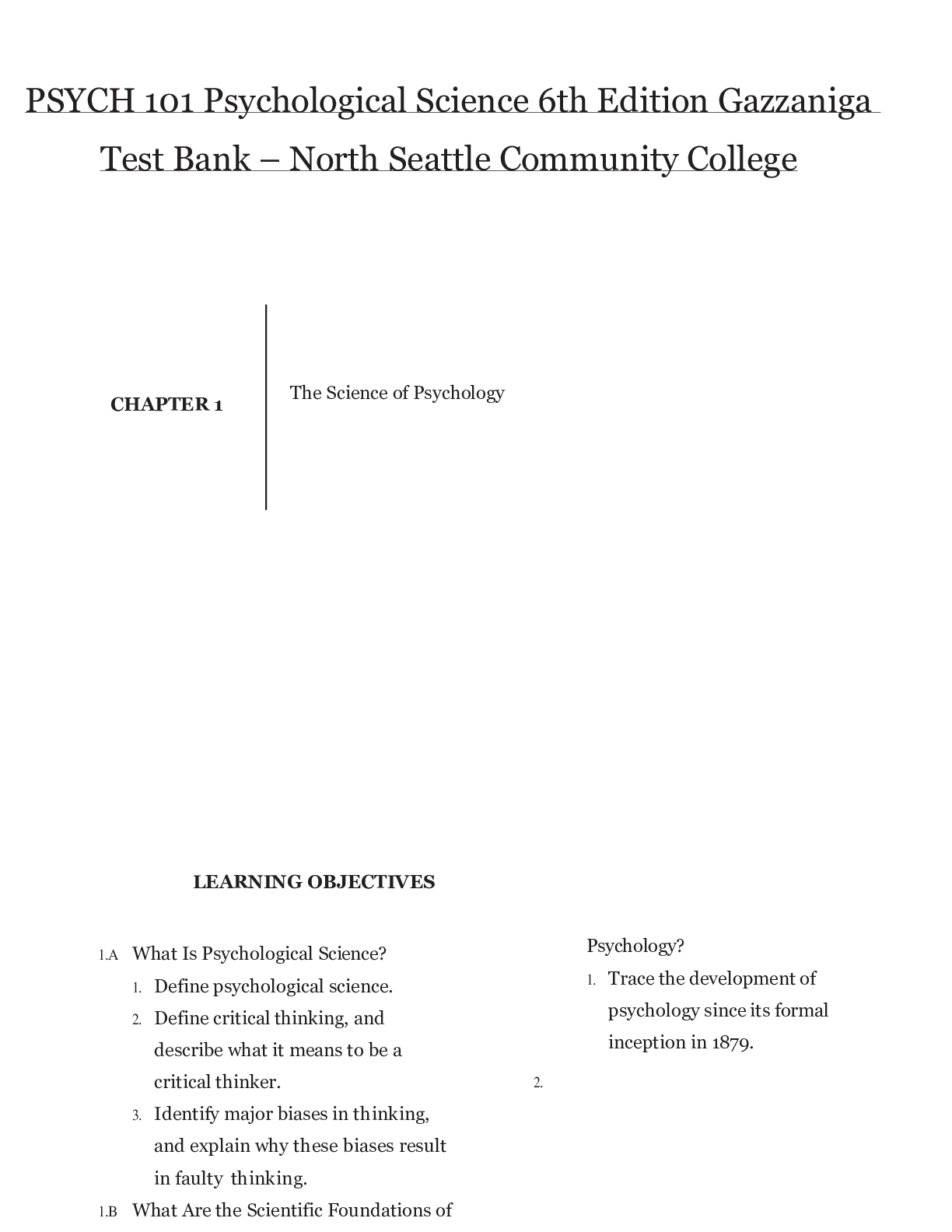
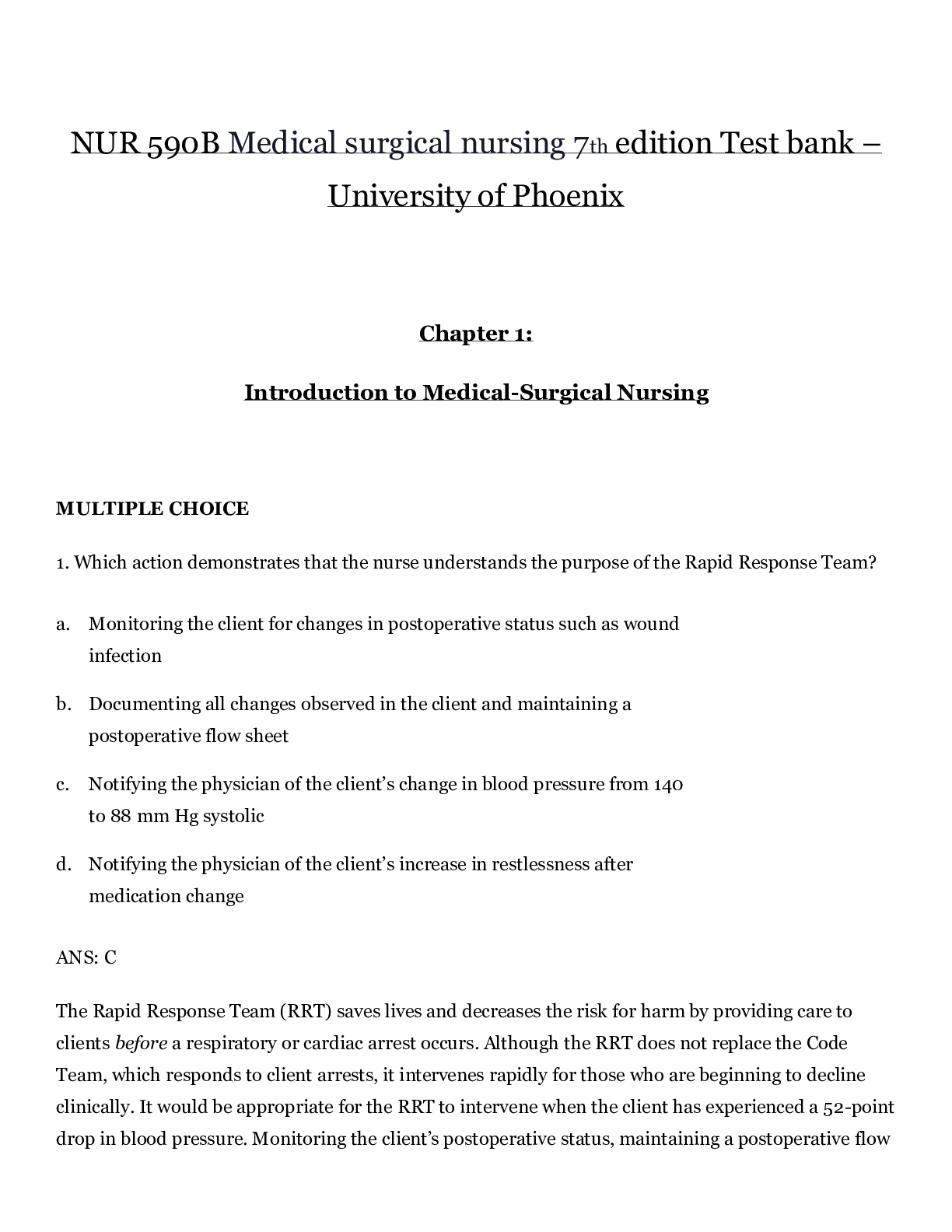
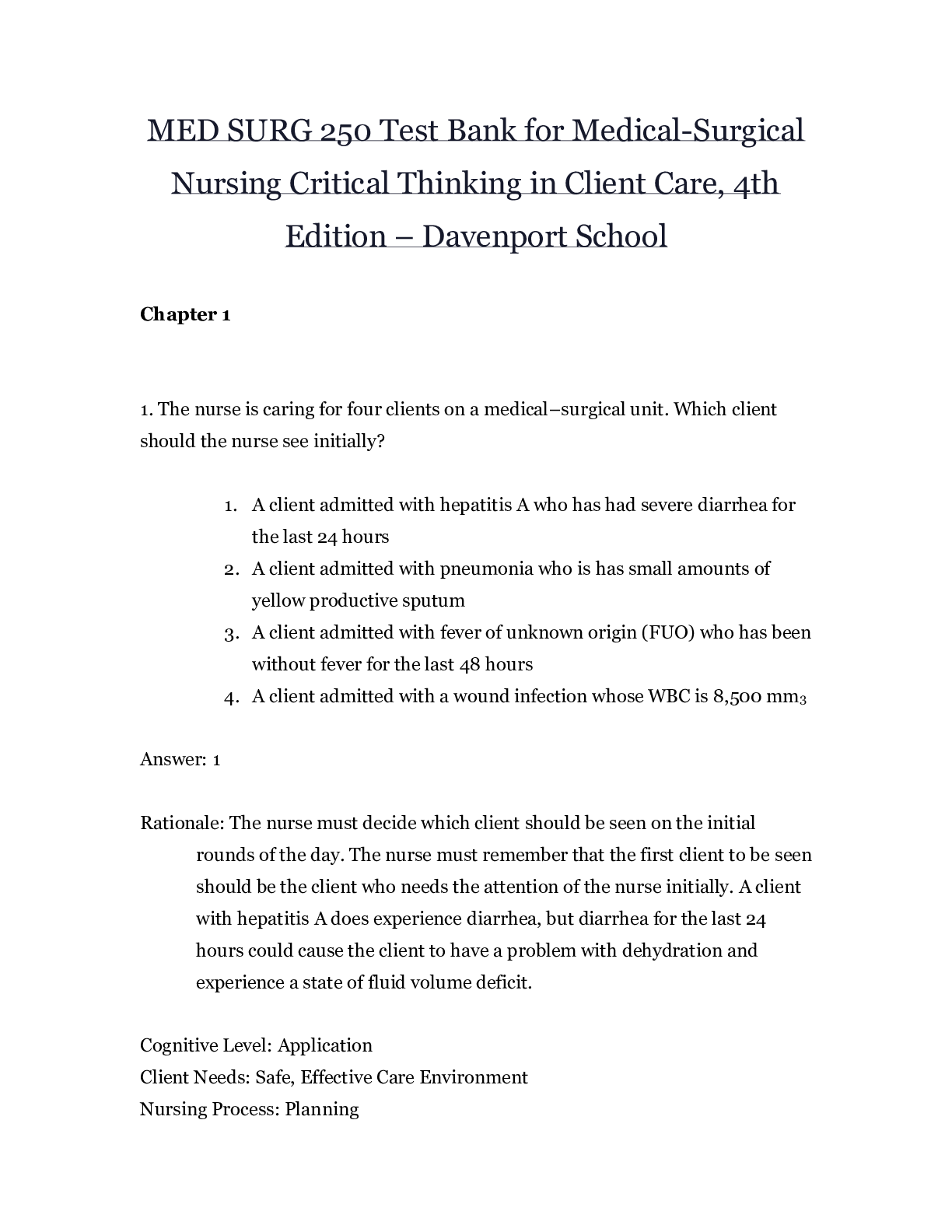



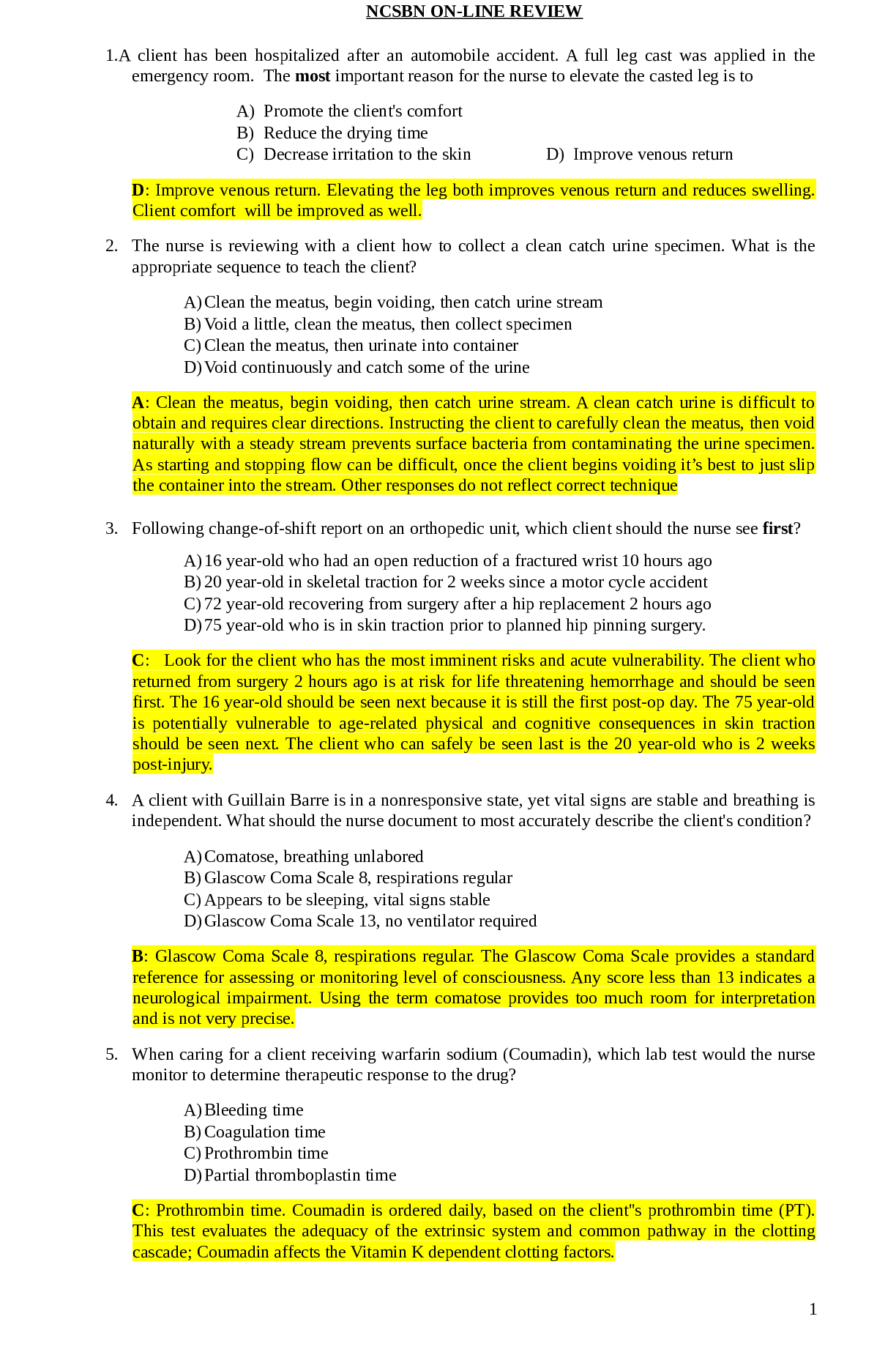
.png)

